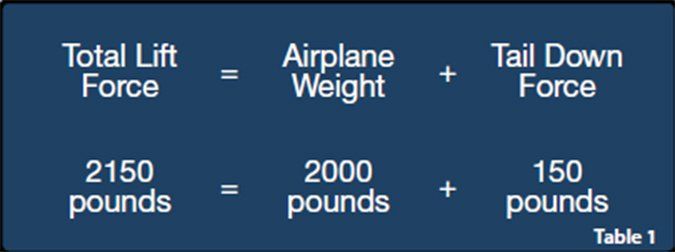If the airplane’s weight force increases to 2150 lbs as described in the main text, then to maintain altitude and straight-and-level flight, the total lift force generated by the wings must increase proportionately using the equation in Table 1, at right. According to the lift equation, assuming wing area cannot be increased in flight (e.g., increasing wing surface area by deploying Fowler flaps) and air density is constant, a pilot may increase the wing’s lift force by increasing the coefficient of lift. This is accomplished by appropriately increasing AoA and/or airspeed.
The equation presented in Table 2 describes how four basic factors—coefficient of lift (CL) air density, wing surface area and airspeed—determine the total lift force generated by the wings. (The coefficient of lift is a measure of a given wing’s efficiency in transforming dynamic pressure into lift and is directly affected by AoA.) All four interrelated factors act simultaneously and in the presence of each other to affect lift. For lift force to increase, one or more of the four factors on the right side of the equal sign of the equation in Table 2 must increase.




